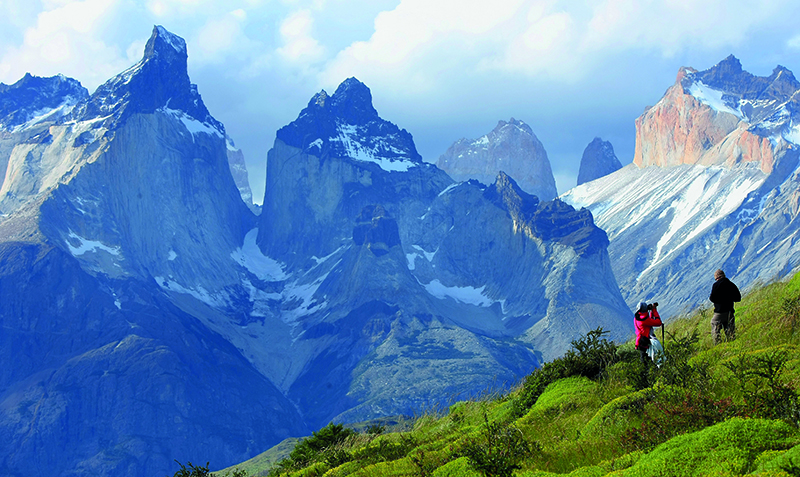A land of startling contrasts, Chile sees more and more visitors arrive each year to experience its stunning natural landscapes, from the towering volcanic peaks of the Andes to the ancient forests of the Lake District, as well as its rich cultural, artistic and gastronomic diversity

Chile welcomes over 3.5 million visitors yearly, making it the seventh most visited country in the Americas. The government is now seeking to increase the number of visitors; the goal for 2018 is to surpass 4 million – while adding to economic opportunities and protecting its biodiversity. Indeed, diversity is one of the principle reasons why people choose this long, skinny coastal nation as a tourism destination.
Chile’s diversity is perhaps most evident in its geography. Its seacoast measures some 4,000 miles long, one of the longest in the world. Visitors can enjoy lakes, volcanoes, beaches, and mountains along with urban landscapes. Popular destinations include the Atacama Desert, the Torres del Paine rocky peaks in Patagonia, and Easter Island, among many others. According to Andrea Wolleter, Managing Director at Turismo Chile, the country is also keen for visitors to discover Aysén in northern Patagonia and Chiloé, “an attractive island with its particular palafitos (typical stilt houses built in the water) and churches that have been declared UNESCO World Heritage Sites.”
Javiera Montes Cruz, Undersecretary of Tourism, points out that Chile’s geographic diversity means it is a great choice for scientific tourism as well. This “very innovative” tourism offering is focused on Antarctica and Navarino Island, which is located between Isla Grande de Tierra del Fuego and Cape Horn, a unique place that offers fishing, kayaking, hiking, and horseback riding.
Lonely Planet selected the Atacama Desert as one of the 10 must-see regions for 2015. Travel+Leisure ranked the 20 best destinations for solo travelers, and placed Chile in seventh place, behind countries like Norway, Switzerland, and Vietnam. Ms. Wolleter is particularly proud that the Torres del Paine Mountains were voted the eighth wonder of the world by visitors to VirtualTourist.com. “We are extremely proud to be chosen from among 330 other destinations in the world after four months of public voting,” she says.
For more cultural diversity, visitors can learn about the Mapuche, a group of indigenous people who live in the country’s south-central area, which includes parts of Patagonia. Or, if their travels take them to Chile’s northern regions, travelers can learn about the Aymara, who also live in Peru and Bolivia.
The country’s varied geography naturally leads to diversity in other areas, including gastronomy. Thanks to Chile’s immense seacoast, the country is particularly skilled at creating fish and seafood dishes. The cuisine varies between regions, so travelers have an opportunity to taste specialties that reflect the region they are from. Eleven wine routes around the country, and vineyards that are open to the public and that feature a range of architectural styles, are sure to please visitors who seek delicious food and wine as part of their exploration.
Lodging in Chile includes accommodations for virtually every type of traveler and budget. Of particular note are high-end sustainable lodgings that work to respect the nation’s ecological diversity while offering visitors the security and safety that they expect when they travel. In the country’s urban areas, lodge and boutique-style hotels are becoming quite popular, giving travelers even more options as they explore Chile.
While 70% of Chile’s tourists come between October and April, the months of June, July, and August are also a good time for skiers. Business travel is typically concentrated March through June and August through October, so Chile truly is a year-round destination.
0 COMMENTS